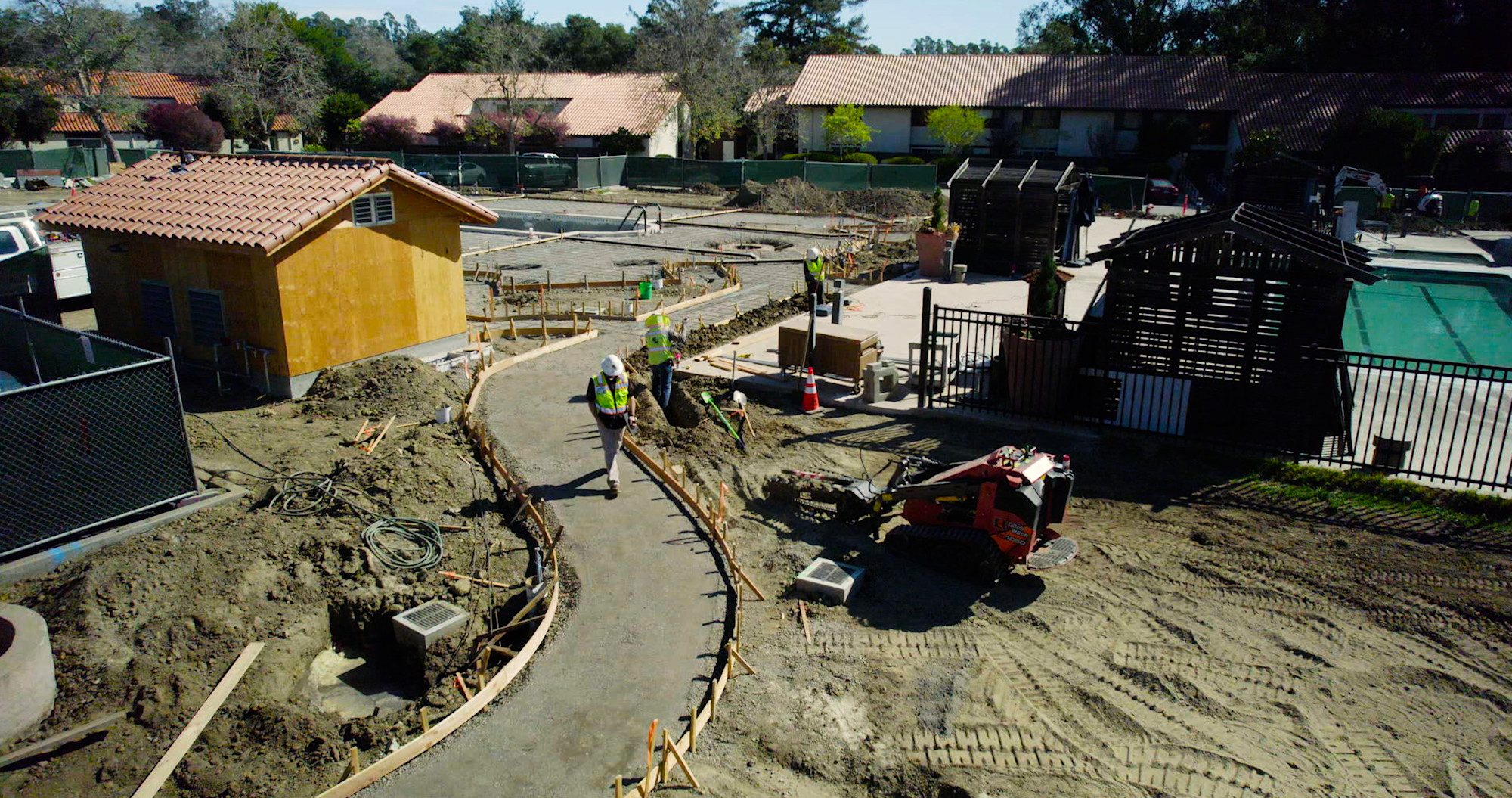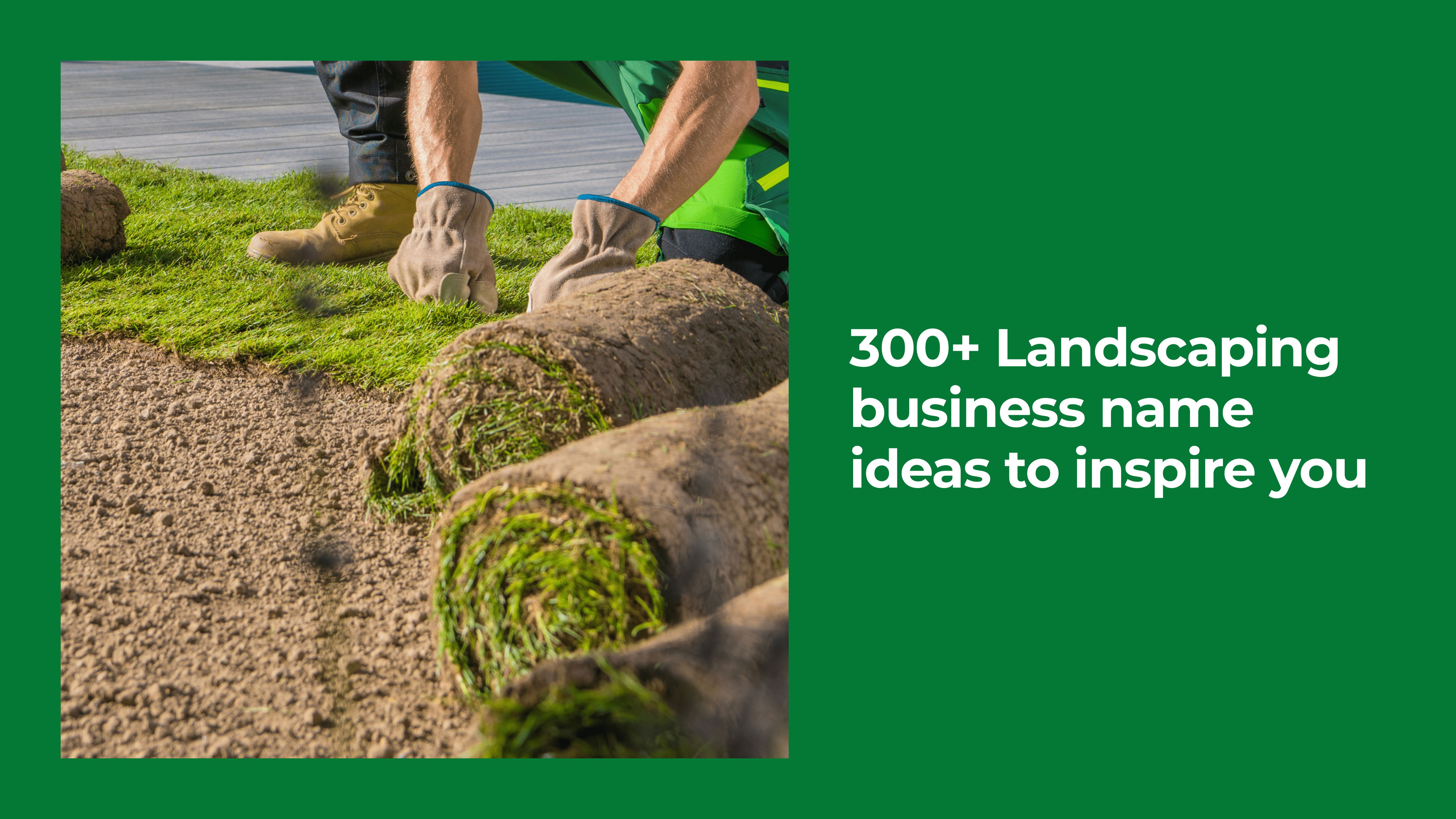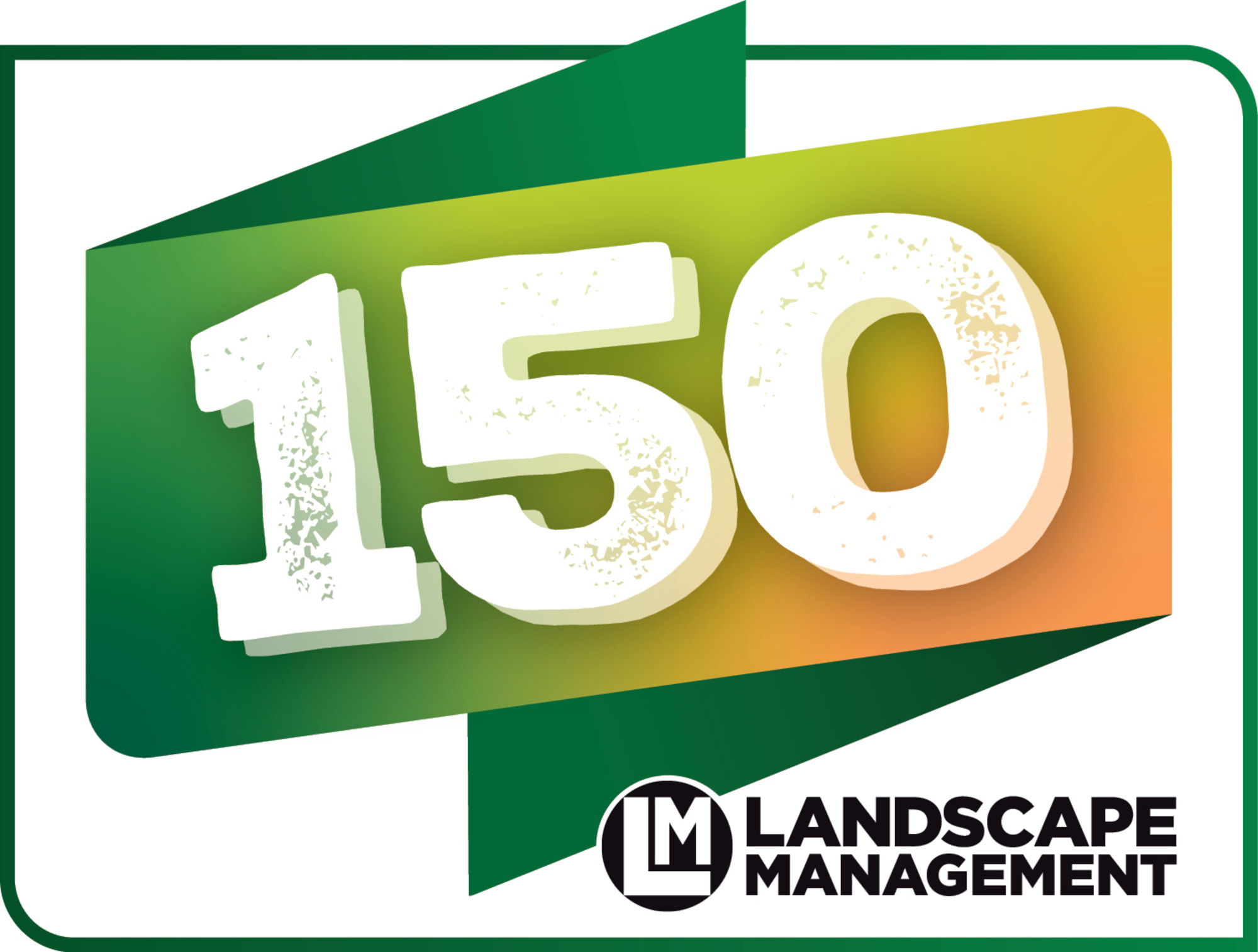Table of Contents
Table of Contents
- Essential commercial cleaning equipment & supplies
- General Cleaning Equipment
- Floor cleaning equipment
- Disinfection & sanitization equipment
- Waste management & restroom cleaning
- Window & Exterior Cleaning Equipment
- Safety & protective gear
- Bonus: business management tools
- Cleaning business software
- Lead generation tools
- Accounting software
- The bottom line?
- Disinfection & sanitization equipment
- Waste management & restroom cleaning
- Window & Exterior Cleaning Equipment
Your cleaning business is starting to pick up, but finding the right equipment has been challenging. You already know that having the right tools:
Helps you deliver premium service and shape first impressions.
Make the business look reliable and professional, leading to more projects.
Saves time and boosts profit, ensuring you’re not wasting billable hours scrambling for equipment or supplies.
But with several options available and different project requirements, how do you identify the right equipment, especially if you’re just starting?
What tools are needed to do the job right, beyond the obvious mops, brooms, disinfectants, and sponges?
This guide breaks it down for you.
Here, you’ll see different equipment required for various cleaning use cases so you can make informed purchasing decisions.
Essential commercial cleaning equipment & supplies
There are different categories of commercial cleaning—office spaces, industrial sites, retail stores, and more. Each requires a unique approach, and the right supplies make all the difference.
Here’s a list of must-have cleaning supplies for different janitorial services.
General Cleaning Equipment
Are you starting a cleaning business or already have one? Below are different types of equipment you should have on hand.
Vacuum cleaners: Commercial cleaning businesses need vacuum cleaners that run for hours without breaking down, offering strong suction and advanced filtration to trap more dirt.
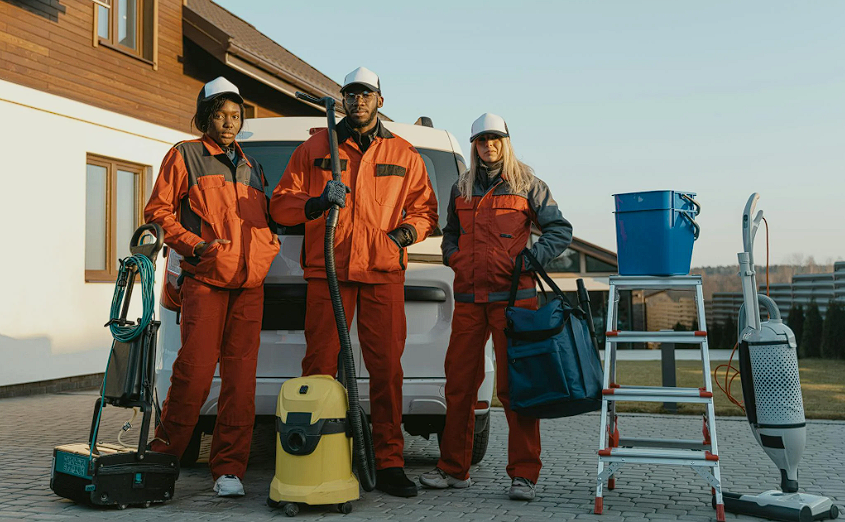
Since you’ll cover large spaces with accumulated debris, you need a robust model designed for commercial properties that won’t slow you down.
To make the right choice, pick a vacuum type that matches the environment you’ll be working in.
Backpack vacuums for tight spaces or areas that are difficult to reach.
Upright vacuum for large, carpeted areas.
Canister vacuums for above-the-floor cleaning (e.g., shelves, vents, or walls) and hard floors.
Wet/dry vacuums for spaces with wet or dry debris.
Choosing the right vacuum for each project lets you be more efficient and maintain high-quality service.
Mops and buckets: Tatum Fowler, owner of K&T Cleaning Service, considers mops an essential tool for cleaning businesses. The kind of mop to choose depends on the space to be covered:
Flat mops and dual-compartment buckets for office buildings or hospitals, as flat mops hold less water, reducing dry time, and dual buckets separate clean from dirty water, preventing cross-contamination.
Spin mops with self-wringing systems require minimal manual effort to keep excess water off the floor. They are great for small spaces and quick cleaning.
String mops and heavy-duty buckets for populated environments such as restaurants, malls, or warehouses. It has an industrial-grade option for better absorption.
Brooms and dustpans: While brooms help you clean places a vacuum can’t reach, the right one is essential for effective cleaning.
To choose the appropriate broom, think about:
The space you’re cleaning. Is it expansive or a tight area? If it’s a large area, opt for push or push-to-center brooms. They have large swaths, making it easy to move debris along.
Tight spaces require precision brooms such as angle, lobby, whisk, and corn brooms. These brooms have pointed edges that fit corners and allow for sweeping under furniture.
The surface you’re cleaning. Are you sweeping a hard, smooth, rough, or polished floor? Push brooms or ones with stiff bristles are ideal for rough and hard surfaces. Brooms with horsehair or Tampico fiber (soft bristles) are suitable for polished surfaces.
The handle. Brooms with longer handles are ergonomic, making sweeping without bending and cleaning hard surfaces easier.
Brooms with steel handles are better suited for heavy-pressure sweeping; otherwise, use wood, fiberglass, or aluminum handles, as they’re lighter while still durable for commercial work.
Cleaning carts and trolleys: Carts and trolleys are necessary for cleaning large spaces where multiple tools, seamless mobility, and organization are needed.
They’re useful for cleaning businesses in these industries:
Health space: A good cart, like high-security cleaning carts designed for hospitals, has separate compartments for cleaning supplies, disinfectants, waste bins, mops, and brooms to ensure proper hygiene.
Hospitality: Housekeepers in this industry need carts to move fresh linens, cleaning equipment, and waste bins without making multiple trips. Ergonomic, linen, and janitorial housekeeping trolleys are suitable options here.
Office buildings: Particularly spaces with multiple floors where cleaners need to move supplies across different areas.
A cart, such as a compact housekeeping trolley, helps carry cleaning equipment, mops, and microfiber cloths across floors.
Warehouse: Since most warehouses or industrial spaces are large, you’ll need heavy-duty trolleys to carry floor scrubbers, mops, cleaning agents, and safety signs when cleaning.
Dusting tools: The appropriate tool is defined by the surface, area, or equipment being cleaned.
Here’s a list of different options for various situations.
Microfiber cloths are best for cleaning office spaces, glass surfaces, furniture, or bathroom fixtures. They’re environmentally friendly and effectively trap dust without spreading particles into the air.
Synthetic dusters with long fibers: These are used to wipe tight areas as they can be bent into different shapes.
Lambswool and ostrich feather dusters are best for dusting polished and delicate surfaces such as TV screens, monitors, cabinets, vintage furniture, mirrors, glass, chandeliers, and polished wood.
Lint rollers and sticky dust traps: This duo is a game-changer for restaurants, hospitality, corporate offices, and hospitals where cleanliness is essential. Lint rollers (e.g., Scotch-Brite lint roller or giant lint roller) help remove fabric debris, dust, and crumbs from cushions, furniture, or curtains.
Sticky dust traps (e.g., sticky mats or sticky dust pads) catch airborne particles in sterile environments and trap dust from footwear or wheels.
Floor cleaning equipment
Keep your floors sparkling clean with the following tools:
Floor scrubbers: These are used to remove dirt stuck to the floor or hard surfaces. They come in two types—walk-behind and ride-on. The walk-behind requires an operator to push it along while it cleans and collects the dirty solution from the floor. Ride-on, on the other hand, is driven around to clean the floor.
To choose a floor scrubber, consider:
Recovery tank size. A 5-liter tank size is usually sufficient for small areas. Larger areas require bigger tanks, over 9 liters for uninterrupted cleaning.
Power source. Can you connect the device to a power outlet without causing a hazard? If yes, a wired scrubber is ideal. Otherwise, opt for a battery-powered scrubber for flexibility.
Buffers and polishers: These restore or maintain the shine of hard floors. Buffers, a.k.a. rotary floor machines, use a rotating pad or brush to strip or scrub floors (like hardwood, vinyl, or tile). They’re used for stain removal and deep cleaning. Polishers operate at higher speeds to give floors a smooth, glossy look.
Here’s how to pick one:
Think of the machine’s rotation per minute (RPM), or speed. Low-speed buffers (150 to 300 RPM) are ideal for deep industrial or commercial cleaning and scrubbing floors.
High-speed machines (1000+ RPM) are suited for polishing in retail, offices, and hospitality, where glossy shine is needed.
Match it to floor types. Hardwood floors need low-speed buffers to prevent damage, while tiles, concrete floors, and vinyl benefit from high-speed polishers to restore shine.
Carpet extractors: For carpets and upholstery cleaning projects, carpet extractors provide deep cleaning using warm water and advanced technology.
See how to choose one based on the surface type:
Low-pile carpets: These carpets, made from short fibers, typically trap less dirt but have high foot traffic. They require deep cleaning without excessive moisture, so high-suction steam or low-moisture encapsulation cleaners are ideal.
High-pile carpets: These tall fibers are woven into large loops and collect more dirt. They need thorough cleaning without water retention, so hot water extraction cleaners with strong suction are preferred here.
Stain-prone areas: Locations such as restaurants, schools, or hospitals experience frequent spills and require tools with deep penetration and stain-removing power. Carpet cleaners with high pounds per square inch (PSI) are ideal for tackling these stains.
Outdoor and industrial carpets: Found in gyms, stadiums, or heavy-duty areas, these carpets capture tough grime and need high-pressure extraction for proper cleaning. Truck-mounted carpet cleaners or industry-grade portable extractors are excellent options for these environments.

Steam cleaners: Want to effectively eliminate germs, dust mites, grout, and other allergens? A steam cleaner is your ideal solution. The best type depends on the surface being cleaned.
Multi-surface steam cleaners with adjustable settings are most effective for hard floors such as hardwood, tile, or vinyl. They eliminate grime and sanitize without harsh chemicals, preserving the floor’s finish.
Carpet-specific or portable steam cleaners are perfect for carpets and rugs. They easily loosen dirt and odors without damaging them.
Handheld steam cleaners are most effective for upholstery, while heavy-duty steam cleaners are best for commercial spaces like restaurants and office buildings.
Ride-on floor sweepers: These cleaning tools are for sweeping large areas without stress. For instance, indoor floors such as malls, hospitals, airports, or warehouses require a battery-powered sweeper with soft brushes. Rough surfaces like parking lots or factories need sweepers with tougher, larger brushes and high ground clearance.
Sweepers with adjustable brush pressure and vacuum assist are ideal for carpeted areas. Outdoor spaces and dust-sensitive environments like hospitals or cleanrooms require ride-on sweepers with dust control features and HEPA filtration systems.
Hardwood floor cleaning machines: Specifically designed for wooden floors, these machines help you maintain a polished appearance.
They come in different types depending on your cleaning needs.
Upright vacuum cleaners are your go-to for simple routine cleaning of light dirt and dust.
Ride-on scrubbers with rotating brushes and soft microfiber pads are ideal for deep cleaning.
Steam mops let you sanitize, polish, and restore the floor’s shine.
Disinfection & sanitization equipment
You’ll need the following to ensure cleaning areas are safe and bacteria-free.
Electrostatic sprayers help cover surfaces with disinfectants by electrically discharging the liquid.
Here are a few types to consider:
Handheld electrostatic sprayers for targeted cleaning, such as disinfecting desks and small surfaces in offices or classrooms.
Backpack electrostatic sprayers are best for large areas like retail stores, gyms, or restaurants, as they offer flexibility and mobility.
Mounted or rolling electrostatic sprayers cover large areas, e.g., stadiums, hospitals, or religious platforms.
Foggers and misters: These disinfection equipment help eliminate airborne pathogens and control odors. Their difference is in the droplet size and application.
Say you want to disinfect or prevent mold in large areas with high foot traffic, such as schools, hospitals, offices, and retail spaces. Foggers are your best bet, specifically the ultra-low volume, thermal, and electrostatic options.
Misters are often used for odor elimination and light sanitation in gyms, restaurants, and outdoor spaces. You could choose cold misting machines or battery-powered misters.
UV-C disinfection lights: If you clean high-touch surface areas and require regular sanitization, UV-C disinfection uses ultraviolet light to kill bacteria, viruses, and other pathogens.
There are different types depending on the area in question.
UV-C mobile towers are ideal for large spaces like hospitals, warehouses, and airports, as they disinfect rooms in minutes.

Ceiling—or wall-mounted UV-C fixtures are ideal for offices, schools, and retail spaces. They disinfect without interrupting activities.
The handheld UV-C wand targets frequently used surfaces like counters, tables, or keyboards.
In-duct UV-C lights are designed to reduce airborne contaminants in HVAC systems.
Also, ensure the tool’s wavelength operates at 254nm—the ideal disinfection UV-C range—and it’s approved by regulatory bodies.
Ozone generators: Use ozone generators to kill bacteria or rid large commercial spaces of odors and molds. This tool uses ozone to control indoor pollution and render chemical contaminants harmless. However, it’s risky as it is harmful when not used properly.
Here’s a rundown of ozone generators and ideal use cases:
High-output industrial zone generators for commercial spaces with high foot traffic, like warehouses, hotels, or gyms.
Mid-sized ozone generators for places like offices, restaurants, and retail stores.
When choosing ozone generators, look for safety features supporting delayed start timers or remote controls to reduce exposure. Also, ensure the generator’s capacity matches the cleaning area's size.
Handheld disinfectant sprayers: Handheld sprayers sanitize surfaces by spraying disinfectants in a mist form.
They’re ideal for commercial cleaning businesses and come in different types.
Battery-operated sprayers: Used to disinfect desks, counters, or doorknobs in retail shops and offices.
Electrostatic sprayers: Designed to electrically charge disinfectants to surfaces and cover tight spaces in schools, health facilities, or gyms.
Ultra-low-volume sprayers: Produce fine mists that dry quickly and leave minimal residue. They’re ideal for shared spaces like hotels and food service areas.
Waste management & restroom cleaning
You’ll need the tools below for effective waste management and well-sanitized restrooms.
Trash bins and liners: In addition to the trash bins required on a trolley, clients may ask their janitorial service provider to include trash receptacles in the contract.
Here’s a list of options based on cleaning areas:
Office buildings and retail shops: Small to medium bins with step lids for easy disposal and lightweight liners for easy waste collection.
Industrial and warehouse facilities: Large, wheeled bins (between 32 and 96 gallons) with puncture-resistant liners for sharp objects and heavy debris.
Healthcare facilities: Color-coded, wheeled bio-hazard bins with biohazard bags for medical wastes and infectious materials
Food service areas: Large plastic bins with tight-sealing lids to prevent odors and leak-proof liners that handle food scraps or liquid waste.
Touchless dispensers: Needed for maintaining hygiene in areas like hospitals, airports, and industrial facilities. They operate the same across different environments, the only difference being storage capacity.
High-traffic locations will need dispensers between 2 and 5 liters, while moderate-traffic locations require 1 to 2 liters to prevent constant refills.
Restroom cleaning machines: Restrooms require specialized equipment for deep sanitation and quick drying, causing minimal disruption to users.
Here are the options to consider:
Steam cleaners use steam to clean and disinfect an area without harsh chemicals. They are ideal for hospitals, restaurants, and offices.
Pressure washer: This tool leverages high pressure to clean grout lines and stains from the restroom. It is best for schools, restaurants, hotels, or warehouse facilities.
Window & Exterior Cleaning Equipment
For sparkling, clean windows, here are the must-have tools:
Squeegees and extension poles: Essential for cleaning windows, glass surfaces, and tight areas. They come in different types, each suited for specific cleaning tasks.
Medium squeegees (12 to 16 inches) work best for standard-sized windows, while large squeegees (18+ inches) are ideal for expensive windows in commercial buildings.
You also need to consider the material of the squeegee blade. The silicon blade is suited for heavy-duty cleaning, whether outdoor or indoor. The rubber blade is used to clean all kinds of windows and is also known for providing a streak-free finish on glass.
Pressure washers: Designed for outdoor cleaning, pressure washers help with deep cleaning and stubborn dirt removal. When choosing one, consider the surface type, power source, and water flow rate.
For surfaces like sidewalks, driveways, and decks, a gas-powered pressure washer (2000 to 3000 PSI) is ideal—powerful and easy to control while cleaning.
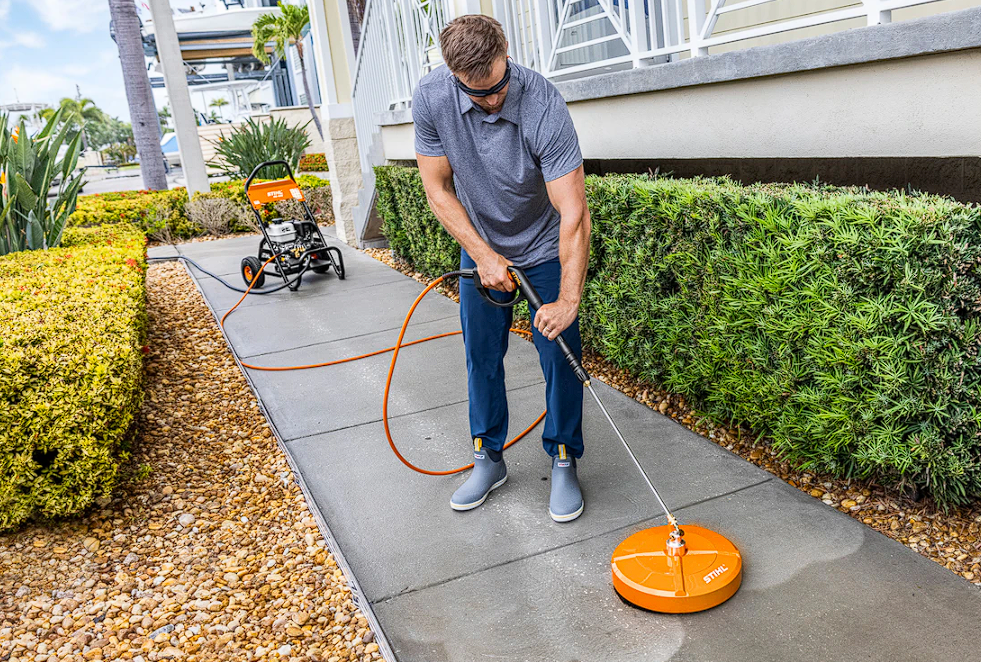
For heavy-duty cleaning in industrial areas, parking lots, and graffiti removal, a commercial-grade pressure washer (3200+PSI) is recommended for maximum efficiency.
Water-fed pole systems: This tool typically features a long pole with a brush at the top and integrated pipes, allowing high windows to be cleaned from the ground.
Here are different types for specific surfaces:
Telescopic scrub brushes or strong carbon fiber poles with a dual-trim brush — high-rise buildings
Hybrid pole with soft brush — solar panels
Aluminum pole and ultra-soft brushes — tinted and delicate windows
Heavy-duty pole and stiff bristle brush — greasy and industrial windows
Glass cleaning solution dispensers: These distribute cleaning solutions onto glass surfaces. The most popular type is the spray bottle, which is light and easy to use. However, it is not very suitable for commercial cleaning.
See other solution dispensers based on different cleaning needs and surfaces:
Water-fed pole dispenser for high-rise buildings and commercial spaces.
Foam dispensers for showrooms and glass doors are effective in preventing streaks.
Pump or pressurized dispensers for greasy or heavy-stained glass.
Safety & protective gear
Maintain professionalism, protect workers, and meet safety regulations with the following equipment.
Gloves, masks, and goggles: Specialized personal protective equipment ensures protection against injuries and compliance with health standards. To choose the right PPE for your cleaning business, look up the recommended set from the official regulatory body.
But overall, here’s a breakdown of PPEs you’ll need:
Rubber/latex gloves: Typically resistant to cleaning chemicals, these gloves are ideal for general cleaning.
Nitrile gloves: Suited for harsh chemicals and are more durable.
Cut-resistant work gloves: Best for cleaning industrial areas and warehouses.
Disposable face mask: For light cleaning where there are allergens or dust.
N95 face mask or respirator: Protects against dust, chemicals, fumes, mold, and airborne particles.
Half or full-face respirators: Suitable for intensive cleaning that involves hazardous materials and strong fumes.
Face shields: Ideal when working in areas with chemicals.
Safety goggles: Protects the eye against debris, cleaning agents, or chemicals.
Slip-resistant shoes: These shoes provide comfort and reduce the risk of slips or falls when working. They must have non-slip soles and be durable, water-resistant, and comfortable.
Wet floor signs: This tool warns of slippery floors. Pick one with bold, noticeable colors (e.g., yellow or orange). Ensure its size matches the cleaning area; foldable signs are for tight spaces, and larger signs are for open areas.
Some other factors to consider include:
Material: Will plastic, metal, or foam be better for you?
Language: Does the sign have multi-language or sign warnings to ensure everyone understands what’s on it?
Stability: Is the sign sturdy enough to withstand being knocked over in a popular area?
Protective aprons and coveralls: Use aprons for light-duty cleaning, such as wiping down surfaces or working with non-toxic chemicals. Use water or chemical-resistant materials like nylon or PVC to protect against cleaning agents.
Coveralls provide full-body protection against harmful chemicals, dirt, or other contaminants. They are best used when working in areas where cleaners may come in contact with hazardous materials.
Hearing protection: In an environment where workers are exposed to noise and loud machinery, hearing protection is crucial to ensuring that team members can work safely.
Earplugs are perfect for low to moderate-noise environments, while ear muffs are ideal for areas with high noise levels, such as operating heavy-duty equipment like floor buffers or pressure washers.
Bonus: business management tools
While the equipment above will help you clean, you need business management tools to run your cleaning business effectively. Here are the top cleaning business software tools for managing operations.
Cleaning business software
Business software helps you take charge of your cleaning service, automating administrative tasks and keeping you organized.
With Aspire, for example, scheduling becomes seamless. Its scheduling feature helps manage your cleaning team’s appointments, training, and time.
Aspire’s cleaning business software offers:
Equipment management: Records available cleaning tools, maintenance schedules, and repairs. It also analyzes equipment lifespan and replacement needs.
Job costing: Improve your cleaning service finances by tracking costs automatically and monitoring real-time profit insights on each project.
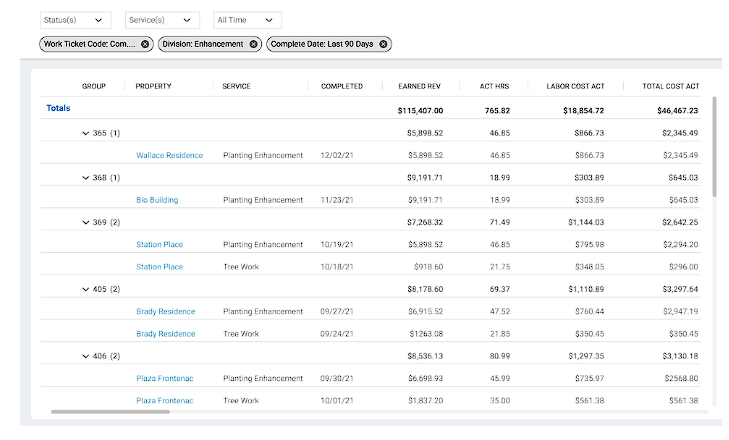
Crew management: Coordinate your cleaning crew using a streamlined communication system. Share schedules and job checklists without leaving Aspire. Plus, you can track billable hours and techs’ locations for accountability.
Lead generation tools
You'll need lead-generation tools like Angi to market your service and generate leads.
But new prospects are just one source of revenue growth.
Aspire’s Marketing Pro integration activates your existing customer list with targeted direct and email marketing campaigns. It allows you to create hyper-targeted audiences to maximize revenue potential from your CRM.

Beyond that, Aspire provides performance tracking, helping you identify the most and least profitable services. This allows you to adjust your growth strategy and maximize returns.
Accounting software
Whether growing a cleaning business or running a thriving operation, the right accounting software is a game-changer. It streamlines expense tracking, payroll, and financial reporting so you stay in control.
Aspire takes it further by centralizing key financial data, like invoices, expenses, or P&L deposits, and syncing it with accounting tools such as QuickBooks and Acumatica.

Accurate financial data allows you to manage cash flow, track expenses, and monitor profitability seamlessly. It also lets you generate financial reports to make smarter, data-driven business decisions.
The bottom line?
Aspire completes your commercial cleaning business. Sure, having the right commercial cleaning equipment is essential, but is your business truly running at its best?
Beyond just getting the job done, are you optimizing operations, boosting revenue, and automating operations without breaking a sweat?
Aspire empowers cleaning businesses to manage their entire service using cloud-based software so they can focus on delivering premium service.
See it in action by booking a free demo with Aspire today.

